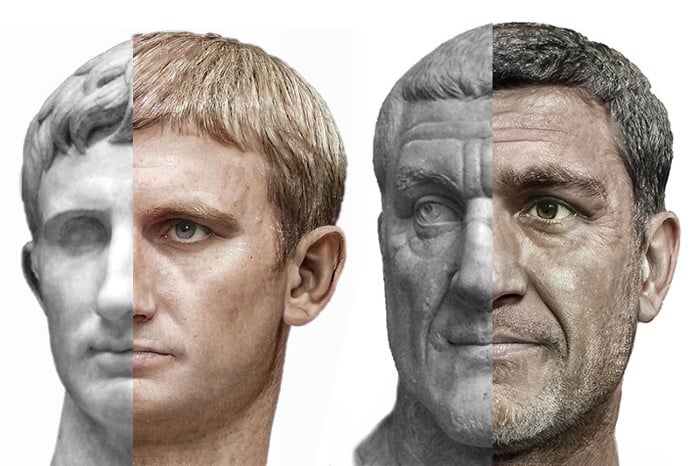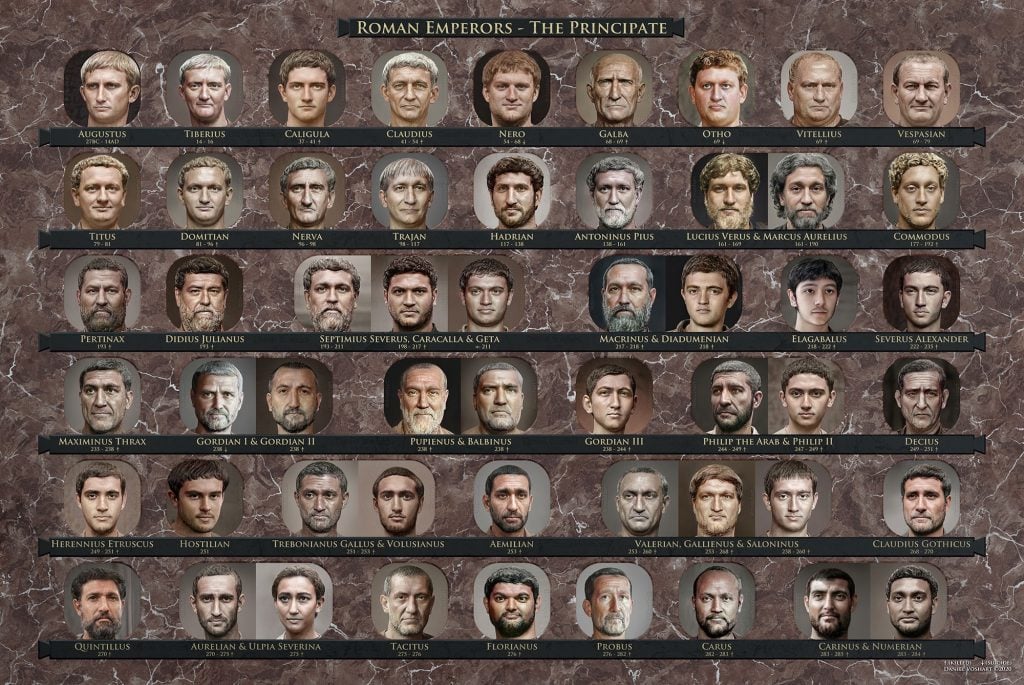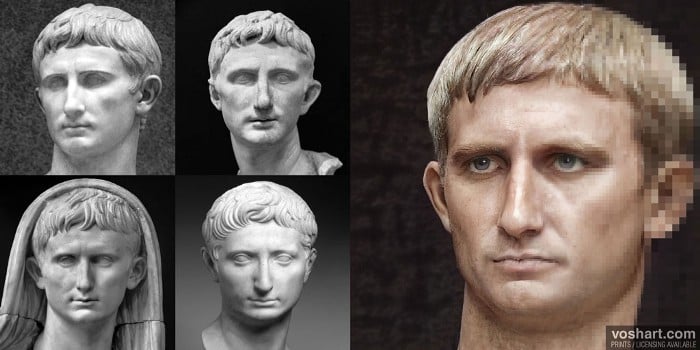Art World
What Did the Roman Emperors Really Look Like? A Novel Blend of AI and Art Conjures Up Eerily Detailed Photographic Portraits
Designer Daniel Voshart's works use a technique that has become popular online.

Designer Daniel Voshart's works use a technique that has become popular online.

Tanner West

You probably know about Nero, the tyrannical emperor who ruled Rome for 14 years in the first century—the one who perpetrated political murders, persecuted Christians, and fiddled while his city burned. But have you ever wondered what he looked like?
Daniel Voshart did. The Toronto based-designer used the first part of his quarantine to make colorized, photorealistic portraits of Nero and 53 other emperors from the Principate. Nero, it turns out, may have looked like evil Ed Sheeran.
To make the work, Voshart turned to Artbreeder, a generative adversarial network (GAN) application that uses machine learning to make composite images. For the everyday user, it’s simple—upload two images and the tool will combine them together in a sophisticated way to create something that looks less like a standard composite and more like the two images had a baby.

Roman emperors of the Principate. Coutesy of Daniel Voshart.
But Voshart’s process was a little more involved. For each portrait, he uploaded dozens of images of stony busts depicting the emperor in question, creating an increasingly refined approximation of their likeness. Once he was satisfied, he moved to Photoshop where the more interpretive work took place: he removed cracks and replaced broken appendages, added skin texture and eye color and so on, essentially turning chiseled rocks into hi-res photographic pictures.
Some decisions were research-heavy, he tells Artnet News, explaining that he looked to the emperors’ birthplace and family lineage to guess at the tone of their skin (a subject of some scholarly debate).

Augustus. Courtesy of Daniel Voshart.
In fact, removing the coldness of the emperors’ likenesses required more than turning stone into flesh.
“It is easy to remove all expression and character from the original when making things photoreal. I tried really hard to keep that,” he says. “Florianus, for example. The bust I was using as source material didn’t have much academic consensus, but I thought the expression was fascinating. It had to be kept. The further an expression is from neutral the harder it is to keep photoreal.”
For previous projects, Voshart has also used machine learning to make portraits of Egyptian mummies and to render a series of figurative clay sculptures created by students at the New York Academy of Art into realistic faces.
His creations are just the tip of the iceberg when it comes to the kind of work being done online. Indeed, there are entire threads dedicated to using tools like Artbreeder to bring long-gone figures back to life. A quick scroll of one such thread on Reddit yields impressive, uncanny, and sometimes just plain creepy pictures of figures brought to life including Cleopatra, the Venus de Milo, and even the Statue of Liberty.